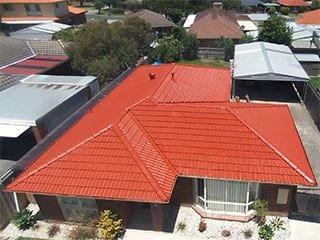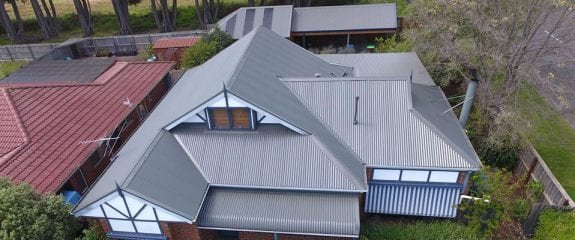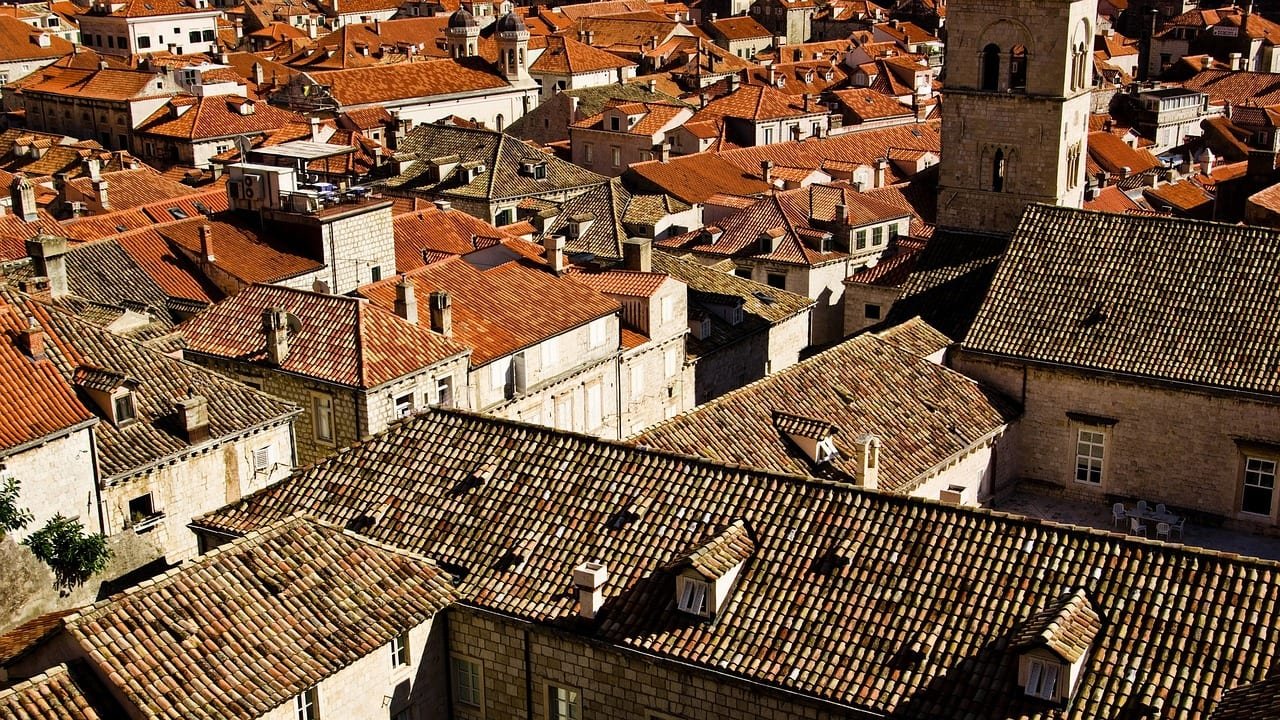By Jim Chronopoulos
Giving your house the right roof type and shape is more challenging than many would imagine. But only if you’re not across all roof types and shapes that can suit your Australian home and what their advantages and disadvantages are.
Because of the vast topography in Australia – ranging from coastal sides to rainforests and deserts – your house requires a different type of roof (material wise and shape wise) depending on which part of Australia you live in and how the climate varies.
However, there are many things other than the climate that can affect the roof of your house – what type of building material is available in your area, what the purpose of your building is, etc. So let’s first see how many different shapes of roofs you can have here in Australia.

Hip (or Hipped) roofs
The name may suggest that it’s a happening or cool roof, but a hip roof is an actual roof type with four faces. A roof that angles down to the wall externally is called a hip roof. It’s the most popular roof shape in Australia.
Pros:
- Provide great resistance.
- Offer excellent strength in times of bad weather and hurricanes.
- Offer shady eaves.
Cons:
-
- Involve more labour, cost and time in building.

Gabled roofs
Gabled roofs are triangular in shape – the reason why you can easily identify them from a distance. These roofs are also sometimes used along with a hip roof to increase the visual appeal of a house. A gabled roof uses parallel rafters in two sets attached to the trusses and meeting at the ridge board.
Pros:
- Can shed snow and water easily.
- Allow more ventilation because of its shape.
- Easier and cheaper to build than many other roof shapes.
- Provide generous space for the attic.
Cons:
- Not suitable for bad weather or high winds.
- Material can easily peel away in bad weather.
Flat roofs
As you would have guessed by the name, flat roofs are flat. They have a very minimal pitch only to provide drainage and water run-off.
Structures with flat roofs are mostly commercial or industrial buildings. Sometimes, even residential structures in less rainfall areas can have flat roofs.
Pros:
- Its flat structure allows for extra space that can be used for a roof garden, patio or an extra penthouse room.
- Very conducive design that helps in the installation of solar panels.
- Very easy and cost effective to build than a pitched roof.
- Require less material and time to build.
Cons:
- Are more prone to water leakage problems.
- Not suitable for areas receiving high rainfall or snowfall.
- Require more maintenance, replacement and repair costs in the long run.

Skillion roofs
A skillion roof is also sometimes called a lean-to or a shed roof. Skillion roofs are usually attached to a tall external wall and have a single sloping roof. Such roofs are brought to use for additions to previously built structures, such as porches and sheds. Many modern-day houses; however, are seeing the entire house being built with a skillion roof.
Pros:
- Require very less building material and have easy assembly.
- Can easily run off water and snow, so ideal for places with high snowfall or rain.
- Great for adding aesthetic appeal to a previously built building.
Cons:
- Not suitable for areas experiencing high winds and bad weather.
- Need proper planning, so an extremely high pitch does not result in a low ceiling.
Butterfly roofs
Butterfly roofs are V-shaped roofs – the reason for its name as it looks like a butterfly in flight. Butterfly roofs are very common and a hit among contemporary, eco-friendly structural designs.
Pros:
- Allow for more natural light with lower winter energy bills.
- Give the house an open, spacious feel.
- Their design allows for rainwater to be collected – a bonus for areas experiencing high drought.
Cons:
- Extremely expensive to build.
- Require high maintenance in the long run.
- Water collected on the roof can result in weak pillars and leakage over time.
Green roofs
Commonly known as a living roof, a green roof is a roof covered partly or fully with vegetation on either a pitched or a flat surface.
Pros:
- Provide excellent insulation to the structure.
- Help to redirect and also absorb rainwater.
- Help to reduce air temperature in urban lands.
Cons:
- Require high maintenance and a careful selection of vegetation.
In addition to the roof shapes discussed above, there are many more shapes that you can find but the ones above are the common Australian roof shapes that you can consider when building a new house or renovating your family home or your industrial/commercial building.
Image Credit: From Melbourne Quality Roofing
Author: Jim Chronopoulos, http://www.melbournequalityroofing.com.au/














